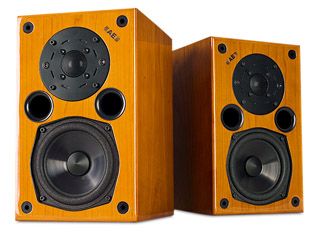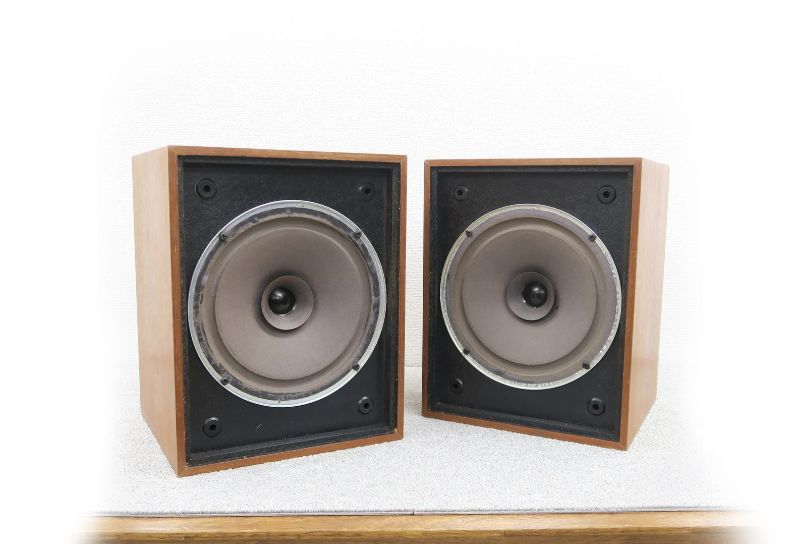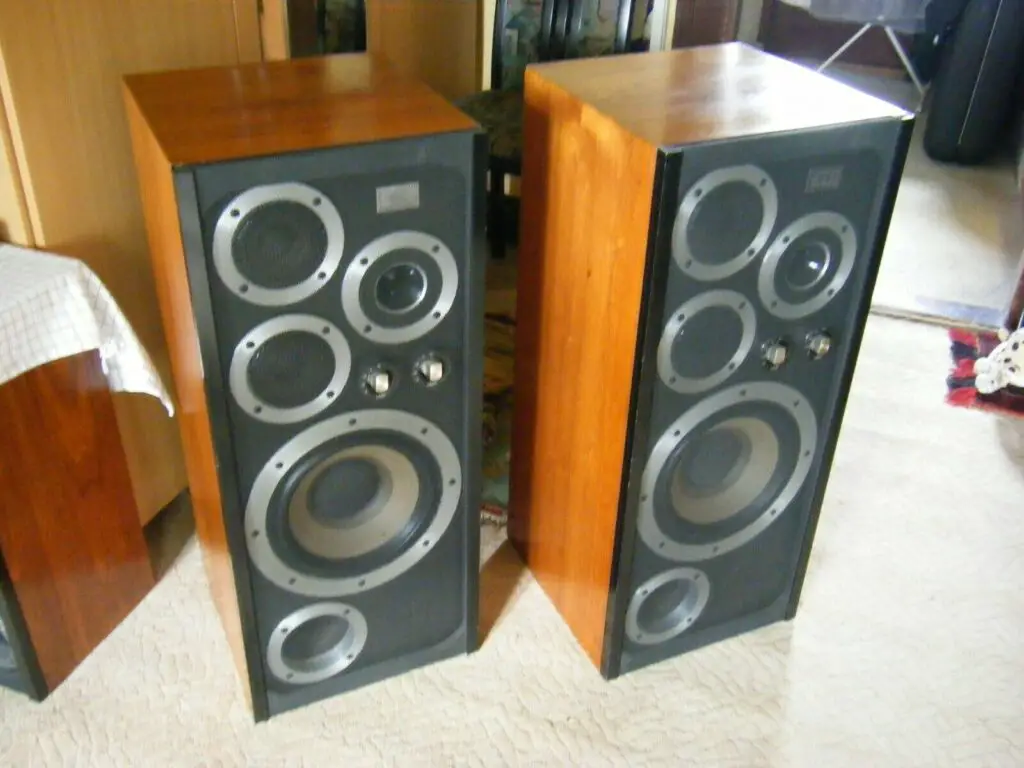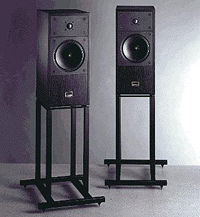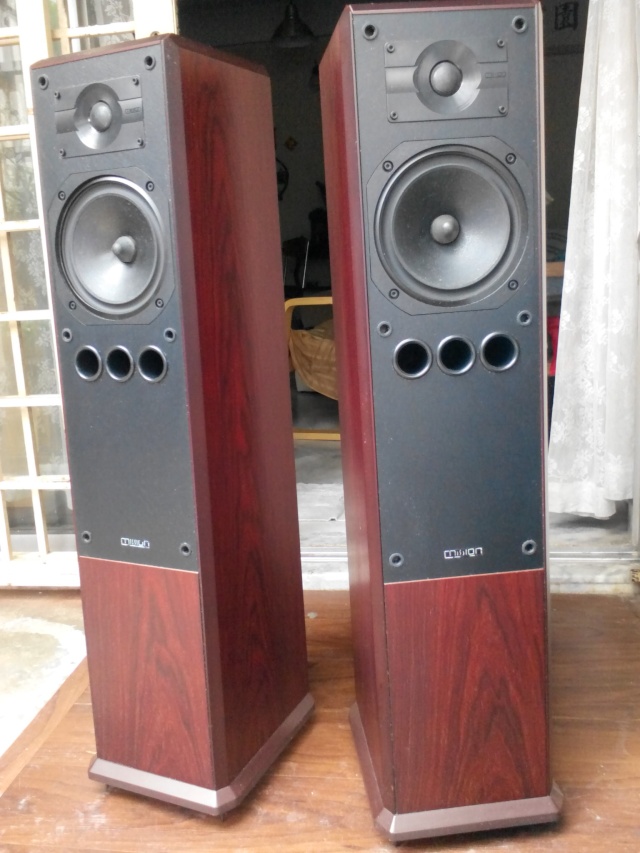The AE1 is one of the most legendary hi-fi loudspeakers of the 1980s, with the Celestion SL6 and the Wharfedale Diamond, in the pantheon of boxes that changed the game.
Aside from the BBC LS3/5a and the Spendor SA1, tiny speakers in the 1970s were few. Indeed, the breed had not been treated seriously at all — Philip Swift of Spendor recalls his previous professional life in retail, where LS3/5as were sold as “kitchen speakers,” rather than genuine replacements for the larger living room boxes! Small speakers with good sound were considered a rarity; they were certainly not the norm.
Instead, large, unwieldy speakers were everywhere. Most employed relatively primitive (by today’s standards) Bextrene, polypropylene, or paper cones, whose weight sapped efficiency as much as the sophisticated multi-element crossings. The quality of the cabinets was often poor, with thin chipboard as standard, often badly damped and veneered in dull teak wood. Most, but not all, 1970s speakers have diffuse bass, a colored midband, limited treble, and low dynamic headroom.
All of this combined to make the AE1 a revelation when it was released in 1988. The first product from a fresh new London-based startup was a far cry from what we’d come to expect from small monitors. Acoustic Energy quickly relocated to the Cotswolds to accommodate demand for this wonderful small loudspeaker, and it has remained there ever since.
This compact (295x180x255mm) monitor was designed by Phil Jones, now of Phil Jones Pure Sound in the United States, and had relatively thick 22mm MDF cabinet walls – at first they were finished in crackle black, similar to what you’d see on an MGB dashboard, but later got a range of fancier real wood finishes. At 3kHz, a specially made 90mm ceramic sandwich aluminium alloy cone mid/bass unit took over from a 25mm SEAS magnesium alloy dome tweeer in the front baffle. In the 1980s, a metal dome tweeter was standard, and the ceramic/alloy cone was science fiction – it belonged to a different period than the KEF B110 unit featured in the greatest tiny speaker of the decade, the LS3/5a.
The straight-sided cone was spun from aluminium alloy with a graded thickness across its profile and then hard-anodized black on both sides, making this drive unit cutting-edge. Because the anodized layers accounted for one-third of the cone’s thickness, it was basically a sandwich of alumina (aluminium oxide) and aluminium, which is known to be stiffer and more damp than pure metal. The dust cover is designed like a cone and is bonded to the cone, which is powered by a 112″ aluminium voice coil former.
The cabinet, unlike the LS3/5a, was a bass reflex design with dual front-firing 40mm ports and a crossover located on the back terminal panel. It was a complicated affair, a third-order design with high-quality iron-dust-cored inductors and low-loss polyester capacitors, just like the LS3/5a. In this regard, the AE1 went against popular belief at the time, which was that simple crossover designs like the Epos ES14 were the way to go.
In comparison to the LS3/5a, the high-tech drive unit materials provided significantly greater power handling and dramatically enhanced dynamics tracking. It possessed a pretty smooth frequency response of 70Hz to 22kHz (+/-3dB), as well as a high power handling of 200W, over ten times that of the BBC tiny monitor! Its sensitivity was listed as 86dB/1w/1m, which was better than the infant Beeb box but still average, necessitating the use of a power solid-state amplifier.
The 1988 AE1 is a very good loudspeaker even by today’s standards. It has a true rhythmic bounce to it, as well as superb dynamics for a small speaker — it sits on transients far less than any other speaker of the time, for example. Despite this, it manages to have enough bandwidth to be more than deserving of being left in the kitchen. The lowest bass guitar notes are lost, but aside from that, the AE1 sounds remarkably pleasing for its size as an all-around performer.
It’s also extremely detailed, with a finely carved, accurate sound that has significantly more transparency than previous tiny monitors. Because of the speaker’s superb phase coherence, all components of the frequency spectrum reach the listener at the same time, which explains how everything in the soundstage appears to snap into focus. It images well, as do all good compact speakers, hanging instruments in space with ease. It also features an incredible amount of stage depth.
Overall, this is a fantastic tiny speaker with a unique sound that is both powerful and transparent. Modern speakers sound better at the extremities of the frequency spectrum, but in comparison to the AE1, they sound bland. This is unquestionably a character speaker, and one of the most significant product introductions of the 1980s. There are lots to select from secondhand because they’ve been around for nearly a quarter-century — expect to pay between £300 and £700 depending on age, condition, and origin.

